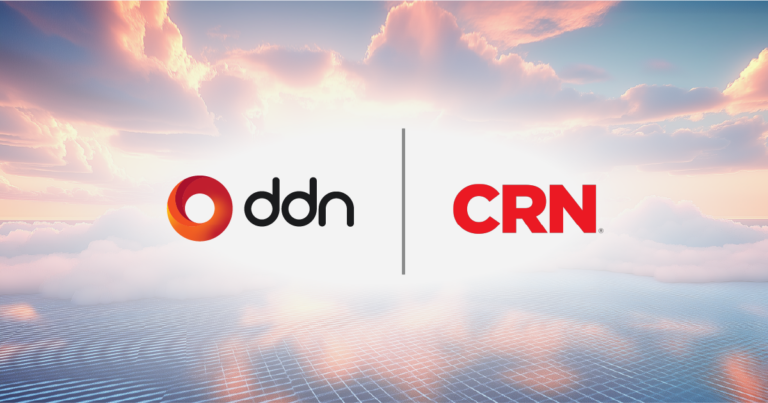Post by Isabella Richard
Key Takeaways:
- Efficient checkpointing saves AI model progress, allowing for quick recovery and maximizing GPU utilization.
- Frequent checkpointing can create bottlenecks that slow performance, making optimization essential for efficiency.
- DDN’s data platform accelerates checkpointing, reducing project runtimes and unlocking significant GPU value.
Similarweb reports the global AI market size is expected to be worth $407 billion by 2027. As AI models increase in complexity, they require more GPUs to manage larger datasets and computational loads. Ensuring full GPU utilization has become crucial for optimizing performance and cost-efficiency. Businesses that leverage proper infrastructure can achieve faster project outcomes and harness AI for automation and data analysis. (Source: CompTIA AI Statistics and Facts)
There are several key operations that influence GPU performance and the cost-efficiency of AI models, such as data ingest, model loading, batch reading, and checkpointing the model’s internal state. These tasks are often IO-intensive and can create bottlenecks that limit both solution performance and GPU utilization. Among these, checkpointing is particularly crucial to manage efficiently.
The Role of Checkpoints
Checkpoints act as persistent snapshots of the AI model managed by the data platform. During AI training, checkpoints capture the entire internal state of the model at regular intervals, enabling training to resume from a specific point in case of interruptions.
Checkpoints are vital for multiple reasons:
- Fault recovery: They mitigate the impact of node failures, ensuring that days or even months of training are not lost.
- Seamless resumption: AI applications can be paused and resumed at any step in the training process, saving all progress.
- Platform migration: Checkpoints enable AI processes to move between systems easily, ideal when issues arise.
- Enhanced inference accuracy: Continuous learning models can leverage intermediate states for better inference while training continues.
- Model flexibility: Intermediate checkpoints can serve as seeds for new training objectives, repurposing models for evolving AI goals.
- Deviation correction: When a model strays from its objective, checkpoints provide a quick way to reset and realign the training process.
Challenges with Checkpoints
As AI models grow, the amount of data saved in each checkpoint increases—often reaching terabytes per snapshot. Frequent checkpoints become essential to minimize data loss and disruptions, but they can also create significant bottlenecks, particularly in write throughput.
During checkpoint operations, all other workload activity halts, leaving GPUs idle and waiting for data to be written to disk. This pause in activity directly impacts both resource utilization and project timelines, making it imperative to complete checkpoints as quickly as possible.
Improving Efficiency with Checkpoints
In today’s AI-driven landscape, maximizing the efficiency of both resources is a strategic necessity. At DDN, we understand the critical role of efficient checkpointing in maintaining high GPU utilization. Our unique parallel file system architecture is designed specifically to optimize this process, enabling data loading to occur simultaneously with checkpoint writing—something no other solution can offer.
For example, an AI model with a trillion parameters might require around 15TB of data to be saved. NFS-based systems often require several minutes to write a checkpoint to disk, wasting valuable GPU compute cycles. With DDN’s data intelligence platform, this same operation can be written to disk in mere seconds—up to 15 times faster than competing solutions.
Over the course of a large AI project, DDN’s checkpointing technology can reduce project runtimes by up to 12%. This translates into savings of hundreds of thousands, if not millions, of GPU hours—resources that can be reinvested in critical AI processes. Whether running on-premises or in the cloud, solutions like an NVIDIA DGX H100 SuperPOD, coupled with DDN A³I solution, unlock millions of dollars in potential GPU value for reinvestment back into the business.
QuoteWe checkpoint and restart as often as we can…
Jensen HuangCEO and Co-Founder of NVIDIA
Unlocking Full Checkpoint Performance
Tests of Checkpointing on a DDN AI400X2 appliance, using state-of-the-art AI libraries like NVIDIA NeMo and HuggingFace, have shown more than 2X improvements in checkpointing performance. This innovation allows enterprises and cloud providers using NVIDIA SuperPOD reference architectures with DDN solutions to fully capitalize on the benefits of efficient checkpointing. By maximizing GPU utilization and speeding up AI workloads, businesses can extract more value from their AI architecture and accelerate time-to-market for AI projects.
As AI models continue to grow in size and complexity, the importance of efficient data intelligence platforms will only increase. Platforms that reduce processing time and optimize GPU resources—like those provided by DDN—will be crucial to staying competitive in the rapidly evolving AI landscape. To explore this topic further, read this paper “LLM Checkpointing Efficiency is a Critical Blocker to AI Productivity“.



